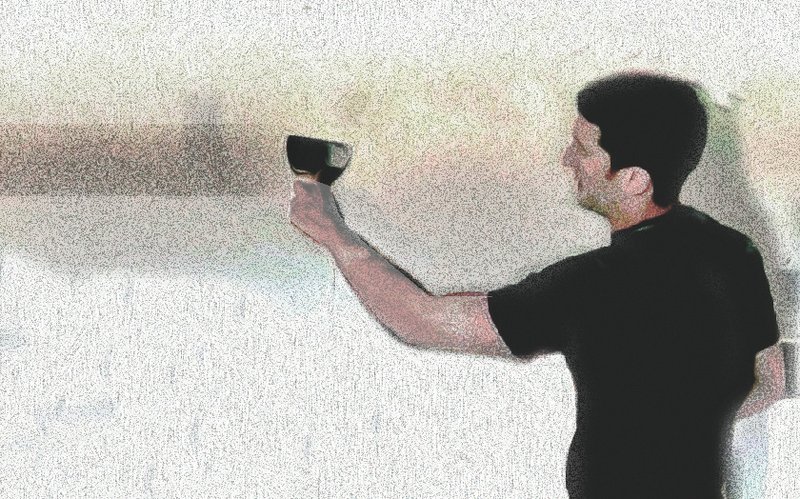I have a stress crack in my Sheetrock. I have repaired large holes, and covered over water damage before, but I don’t know how to handle this. Should I enlarge the crack and use a considerable amount of mud to fill it or should I just fill the existing crack and sand and paint it?
“Cracks in drywall are caused by only a few things: extremes in temperature, poor methods of attaching the wallboard, and physical shifting of the wall framing or foundation,” explains Jim King, project manager with C/M Construction Inc. in Little Rock, which specializes in historic structures. King says he is seeing more of them in recent years.
“My theory is that the extreme heat of the past few summers has caused buildings to shrink and swell, exacerbating pressure on joints and weak spots,” King says, adding that the siding heats up during the day and cools at night, causing stress on the framing below and transferring to the interior sheathing, which can crack. Even brick veneer can move enough to affect plaster inside, King says.
King recommends first examining the exterior to determine whether there has been any movement there. If a nearby chimney is masonry, the aforementioned heating and cooling of the brick could be a cause.
“If the drywall cracks are one-quarter inch or [larger], you should slightly enlarge them and mix up some setting-type joint compound,” he says. This type compound comes in a powder form and mixes with water before hardening rapidly.
“Read the instructions and work fast,” he advises. “Wet the crack first, then use a trowel to fill it to a level just short of the top of the crack. It will harden quickly, so wash your surface as it dries to get the right level.
Wash your tools quickly, too, then apply regular joint compound as described below.”
For drywall cracks which are less than an eighth of an inch, King suggests applying stick-on fiberglass mesh tape along the cracks, then floating out the tape with premixed drywall mud.
While floating drywall takes some practice, the advantages are that you can easily sand or wash out mistakes and float it again.
Items needed for this job include a plastic drywall mud tray, a 10- or 12-inch mud knife and a bucket or box of joint compound.
“Using a smaller knife, scoop out enough joint compound to fill the tray three-quarters full and work it up and down with the bigger knife; this will smooth the mixture and eliminate bubbles,” King says. Do-it yourselfers should avoid using old, discolored, or chunky mud with dried bits that will cause streaks.
Apply the mud along the tape with the thickest part (about 3/16ths of an inch thick) at the center of the tape and the outside edge nearly flush with the drywall, King advises. He finds it easiest to apply one side of the tape at a time, keeping the mud about 10 inches wide.
“Drag your knife along the tape with the most pressure on the outside edge of the mud; this is called ‘feathering’ and will create a nearly invisible repair,” he says. “If you don’t like the way it looks, you can re-feather it while it’s wet or sand it when it’s dry.
“Drywall mud is very forgiving and can be refloated easily, although getting a good result takes a steady hand,” King says.
Do you have a decorating or remodeling question? We’ll get you an answer from an authority. Send your question to Linda S. Haymes, Arkansas Democrat-Gazette, P.O. Box 2221, Little Rock, Ark. 72203 or email:
HomeStyle, Pages 33 on 08/10/2013

